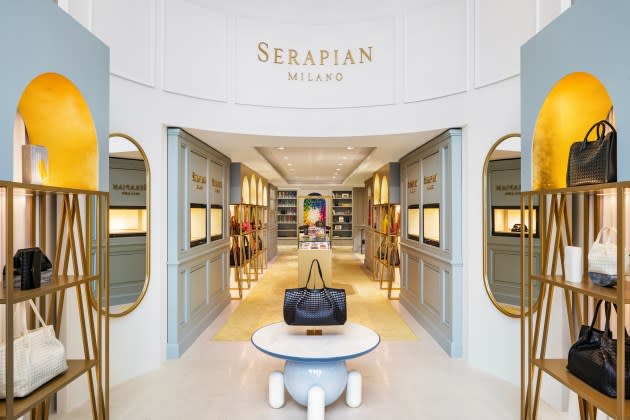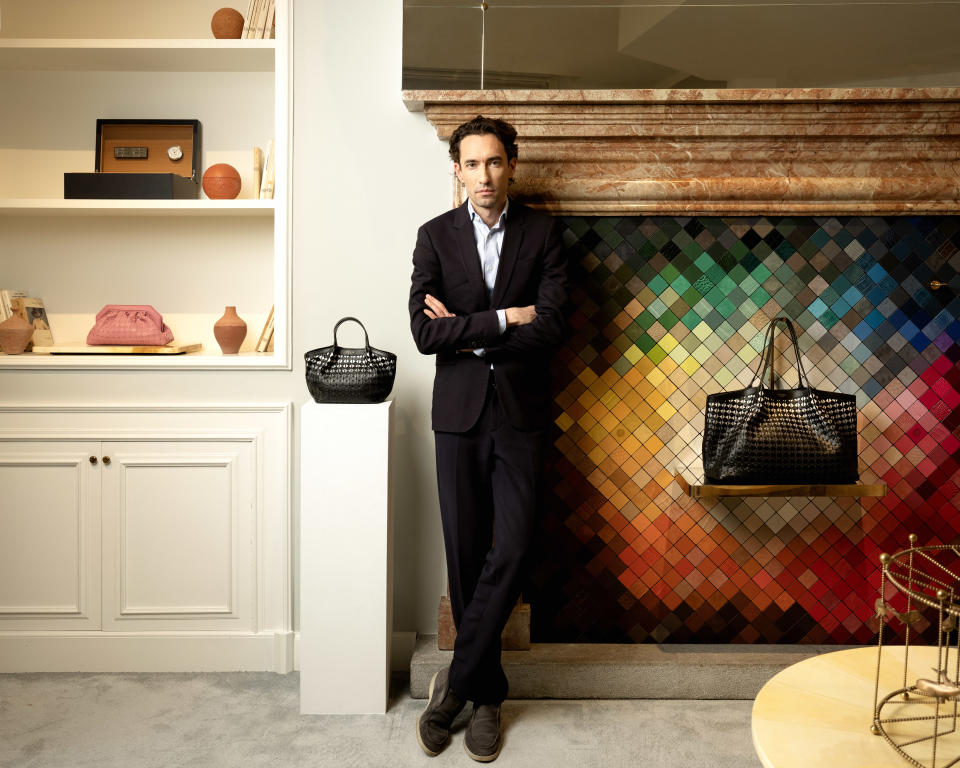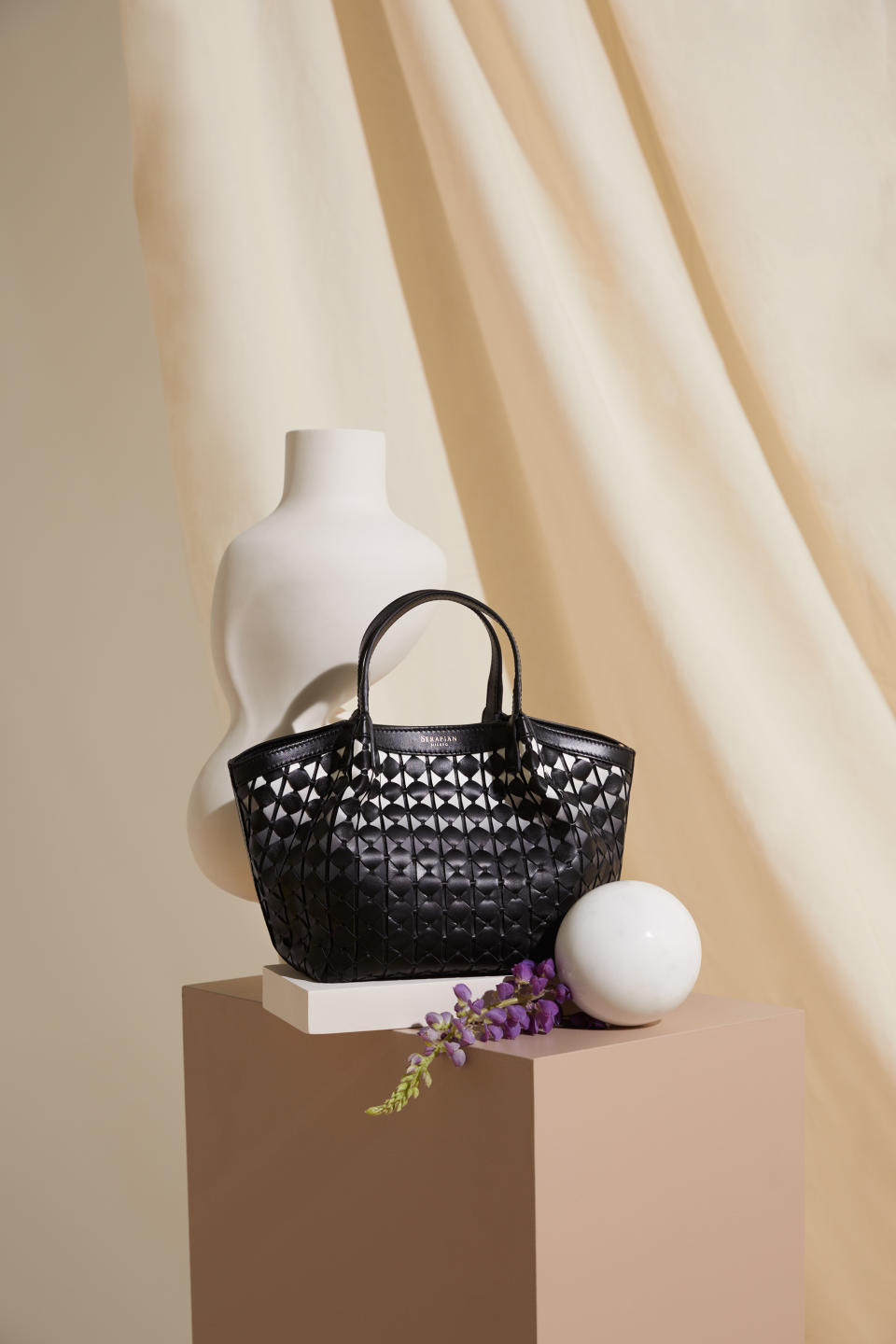Serapian’s Milanese Hand and Bespoke Journey

Unless you are a leather connoisseur, Serapian is likely an unfamiliar brand, often considered by luxury insiders as Milan’s best-kept fashion secret.
But after a long history, founded in 1928 by Stefano Serapian and purchased by Swiss luxury conglomerate Richemont in 2017, Serapian no longer seems so reserved.
More from WWD
Among the maison’s maneuvers, a Serapian flagship is expected to open on Tokyo’s Ginza in the spring of 2024. Also, Serapian has a traveling pop-up format, previously in Paris and currently situated on Madison Avenue and 67th Street in New York where bespoke services are offered. The grand opening of the shop, located at 785 Madison Avenue, is Thursday. Serapian’s pop-up shop in Paris was located on Rue de la Paix near Place Vendôme.
Last year, Serapian launched a “Craftsman to Client” digital tool utilizing cameras and microphones to enable clients from around the world to access Serapian’s bespoke services online and see and communicate with artisans, without having to personally appear at a Serapian location.
“We are definitely on an expansion strategy which is at different levels,” Maxime Bohe, chief executive officer of Serapian, told WWD. “It involves a very strong development of the bespoke business, which is exactly aligned with today’s clients’ expectations.”

Center stage in the Madison Avenue boutique is the “Bespoke Salotto” personalization service for Serapian’s signature “Mosaico” napa leather weaving technique, which was introduced by Stefano Serapian in the ’40s. Forty-four tones and colors are offered, providing limitless color combinations. A master artisan is present at the boutique to work with the clients and discuss the Mosaico handiwork with customers.
“For us, it was key to have the atelier inside the store with the presence of one of our Milanese artisans, during the whole period of the pop-up, which is for six months. Clients can have a similar experience to what they would have if they came to our headquarters in Milan,” Bohe said.
“When you request the bespoke creation, you meet and exchange ideas with a Mosaico artisan who can give you recommendations, and has a very specific Milanese eye and perspectives on how things were made in the past. They suggest color combinations that could work and they also receive ideas from the client, but there is the technical reality, and the artisans, the designers, can propose specific technical solutions. So this process of creation is quite unique.”
After the consultation, an order is sent to the Milan atelier for production and the bag is received by the client in four months.
“There are two levels of bespoke,” Bohe explained, starting with selecting colors for a $5,000 “Secret” handbag from a range of 44 different colors of the napa leather, to personalize and mix and match. The bespoke experience can also involve functional aspects, such as regarding the number of pockets.

“On another level, we delivered a beautiful high jewelry trunk made in the Mosaico. We are talking about creations in the 40,000 to 50,000 euro price range and a project that was totally unique. It took one year to complete.”
Serapian has also renovated car interiors with the Mosaico leather weave, and in one instance re-upholstered a classic car from the 1930s. That project took two years. Serapian’s bespoke activities extend to furniture.
“So really there is no limitation to the creativity and we believe the clients love this journey of creation,” Bohe said. “The possibilities are endless. From the very beginning of Serapian, it was about bespoke. Serapian customers as connoisseurs. They like to wear watches from the very best watchmakers or shoes from historical shoemakers. They look for the best in every category.
“The Madison Avenue pop-up is key for us to replicate this concept of a bespoke. We see an increased trend and requests around bespoke and personalization.”
Serapian’s bespoke business is still managed by a third generation member of the Serapian family, Giovanni Nodari-Serapian, who periodically will visit the Madison Avenue shop to receive clients. “He was practically born into the company. It’s his family business,” Bohe said.
“Historically at Serapian, we are very specialized in soft, fluid shapes — this Milanese hand,” Bohe said. “The napa leather is great for very soft and fluid creations. A more rigid, solid and sturdy material is suitable to a structured bag. The hand of English leather is much more structured.” Serapian bags, he pointed out, are lightweight, devoid of too much hardware.
On the retail front, Serapian operates permanent stores in Rome; in Milan on the Via Della Spiga and at the maison’s Villa Mozart headquarters, as well as one in Abu Dhabi. There are also shops within department stores in Japan such as Isetan Shinjuku Man, Nihonbashi Takashimaya, Shinsaibashi Daimaru and Sapporo Daimaru, and the brand is sold at Bergdorf Goodman, Neiman Marcus, Holt Renfrew, Boyds Philadelphia, Le Bon Marche, Harrods, Tiziana Faust, Net-a-porter, Mr Porter, Braun and Barneys Japan.
The Madison Avenue shop is meticulously designed belying its status as a pop-up. It is inspired by futurist paintings by Serapian family friend Giorgio de Chirico. The 1,400-square-foot space is punctuated by golden arches and marble details, the latter a nod to Serapian’s Villa Mozart headquarters.
Scattered through the Madison Avenue boutique are furnishings including vases and tapestries from the Doppia Firma project by the Fondazione Cologni. Included is a bespoke rendition of the iconic “Catilina” armchair by the Milanese design collective Azucena featuring Mosaico-crafted cushions, among other items. In addition, Serapian’s photographic project, titled “Milano By” and developed with Guido Taroni and centered around Milanese personalities portrayed in their private spaces, is also displayed inside the Madison Avenue boutique.
So why not make the Madison Avenue pop-up permanent? “We love the concept of the ephemeral moment,” Bohe replied. “We also believe that this notion of rarity is very interesting in today’s world where everyone has access to everything. Serapian is very much about rarity. But it’s also one way to very properly introduce ourselves to clients. Our journey also offers trunk shows and private presentations. It’s about long-term, human relationships.”
Best of WWD

